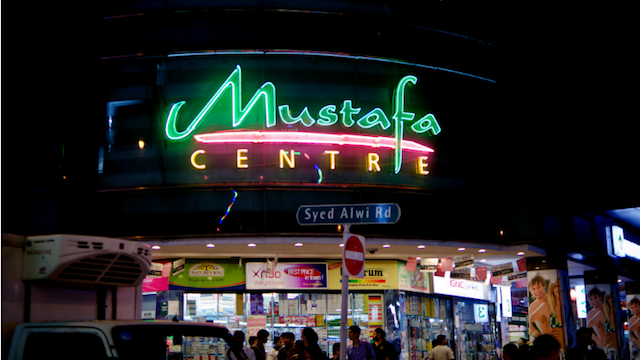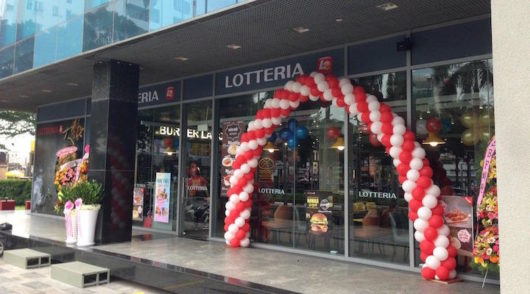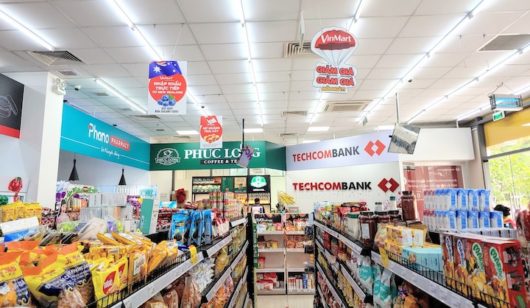
Tucked away in Singapore’s Little India is a 24-hour retail center that is never devoid of foot traffic.
Almost every Singaporean knows what and where the Mustafa Shopping Centre is: the company has featured on the annual Enterprise 50 list for five consecutive years from 1995 – 2000, and has outlived plenty of other retail centres.
What makes it so enticing? Shoppers say the enormous product selection and bargain prices. The 200,000 sqft space is composed of seven floors selling over 300,000 items ranging from Indian spices, wheelchairs and vitamins to gold and designer watches – both authentic and knock-offs.
Everything is available at any hour of the day – money exchange, flight tickets, postal service, and restaurants. The store has even become one of Singapore’s tourist attractions, but a quick search of online reviews suggests that the retail experience has drastically changed since the megastore’s heyday. Feedback includes:
- The place is sleazy.
- Customer service is slow at best, indifferent at worst.
- Broken products.
- Always be aware of your personal belongings, pickpockets are very common at the Mustafa Centre.
- Dizzying and chaotic.
And it might get even more crowded now. The 46-year-old company recently announced the closure of its 65,000 sq ft flagship branch in Serangoon Plaza earlier this year due to construction. This essentially cuts Mustafa’s retail space by a quarter and all products will be stored in its remaining branch in Little India.
With all this in mind, and a growing selection of cheap goods more readily available online, one wonders how many more trips Singaporeans will undergo to save a few dollars?
Without an influx of returning shoppers and smaller customer reach with the closure of its second branch, how can Mustafa ensure the continued growth of its business? Let’s take a look at some factors…
Singapore’s average shopper
Euromonitor International data shows that average annual disposable income per capita in Singapore is now US$27,664 and predicted to reach US$30,143 in 2020. This is quite high in comparison to consumers in the rest of Southeast Asia who make less than US$500 a month.
Source: International Moving Company – Movehub
Even so, modest retail growth was witnessed in 2016 due to Singapore’s slowing economic rates of 3.3 per cent to 2.2 per cent year-on-year. More price-sensitive shoppers are good for low-cost retailers like Mustafa but consumers are more likely to go online to compare prices, especially for more expensive products such as electronics.
And this is where they will find a plethora of pure-play sites such as ShopBack, Ebates SG, and even Lazada Singapore to save on well-known brands and everyday items with cash back and daily sales offers.
Singaporean households also boast one of the highest levels of connectivity, further fostering the behavior for eCommerce. According to Visa research, consumers cited convenience, cheaper prices and direct delivery as key reasons to turn to internet retailers.
They also find purchasing from overseas websites highly attractive because of the absence of GST on imported goods of S$400 or less, which puts more strain on traditional retailers.
It’s also important to note that Singapore’s population is aging and less willing to endure a cramped, disorganised and adverse customer experience to buy discounted mouthwash. Although shopping is still seen as a social activity, a consistent terrible customer experience is enough to outweigh small savings.
As one online commenter, Indu Balachandran, suggested: “If you’d like to avoid crowds, try not to come here during peak shopping months, which runs from October to the following October.
Expansion opportunities
The company could look for another venue to open a second branch but a quick overview of Singapore’s expensive rental costs and competition for prime locations against players like Apple also opening up shop makes that option look dim.
The high cost of renting retail space has slightly declined since 2015 but the massive space that Mustafa needs to operate would set the company back a hefty amount if average rent was still $24.35-$36.25 per sq ft like it was two years ago.
There are also many additional challenges to opening a department store to suit Mustafa’s scale. The company was denied its request to convert a warehouse into a wholesale retailer and given a SGD$10,000 fine for unauthorised commercial use in that same location. They were also slapped with a court order to suspend business for 40 hours after overcrowdedness and fire-safety concerns became too serious.
But let’s say Mustafa was able to secure a perfectly suitable location to house its next brick and mortar branch, now they need employees to run the business. How much would that cost?
The retailer would need to hire at least 50 employees to start and if in Singapore, a customer service rep makes approximately $32,267 a year, they would need to generate value to make up for employment and training costs.
JP Morgan shared this neat chart below. The average employee of an offline retailer generated $279,000 in gross sales compared to the average electronic shopping and mail-order house employee who generated an average $1,267,000.
Offline expansion may not be in the cards right now but the promise of ecommerce is that Mustafa can sell its products and services to anyone in the region.
The future of retail
Weak tourism, a notable decline in retail sales last year and even a small drop in retail space rent paints a pessimistic future for Singapore in the coming years. Online retail sales in Singapore, however, are expected to reach $5.4 billion in gross merchandise volume by 2025.
Mustafa makes a relatively small profit margin of 10-15 per cent on most products, to be able to keep its prices lower than those of its competitors. The company imports large quantities of goods directly from cheap sources such as Thailand, Malaysia and the US, and it saves additional costs by cutting out distributors.
Regardless of its popularity, there are already a slew of online and offline businesses, especially specialty shops, that Singaporeans frequent for bargain deals and special sales without the uncomfortable crowds – such as AnchorPoint Shopping Centre, for example. But offering budget prices cannot save the slow death of traditional retailers.
eCommerce shouldn’t be seen as a separate channel but instead as another store branch.
What happens when one branch is closed and the other is too far away? You either do a quick Google search for the company’s online webstore or you go into a competitor’s store.
Bargain hunters have no brand loyalty but online stores are able to build and maintain relationships with their customers with upcoming promotions and discounts through email marketing and online ad retargeting. Mustafa has only word of mouth to rely on and its social channels, which are currently not being put to the best use.
And more pure-play brands are moving into the offline territory by adopting omnichannel strategies after realising the importance of a positive customer experience. This trend is more evident in electronics brands meaning consumers in Singapore will be able to shop for Samsung, Huawei, Parisilk, Lenovo and more online through their partnerships with e-marketplaces Qoo10 and Lazada and still be able to comfortably test products offline in their flagship stores.
Multi-channel retailers are benefiting from having an online presence growing at 11 per cent CAGR, which mitigates any worry that eCommerce will cannibalise traffic to offline stores.
Mustafa is in one of the best-primed offline retailers in Southeast Asia to dominate commerce with an omnichannel strategy.
Would Mustafa do well online?
Probably, but there are many other factors to consider. The business already meets the standard requirements needed to successfully launch an eCommerce business: a large number of SKUs, strong branding and awareness, existing customer base and an experienced entrepreneur running the entire company.
The purpose of going online is to give your customers access to your products or services at anytime – the exact same concept of Mustafa’s 24/7 offline store. In 1999, Mustafa did try its hand at an online website aimed to do B2B eCommerce but shut down after experiencing losses due to credit card fraud.
Although that problem still persists in today’s retail world, most notably in the US, credit card and tech companies are introducing their own ways to combat hackers.
Here are four paths I believe the company could use to test the online waters:
- eCommerce ‘popshop’ where customers can submit online remittance forms or check a list of products offered in store. This bare-bones landing page would be able to capture visitor data and activate them in the future with bargains on social channels such as Instagram or Facebook.
- Add a shopping functionality to the current Mustafa website that already experiences on average 260,000 visitors per month, most likely to view the latest foreign exchange rates.
- A mobile application where shoppers can sign up to order and pay for products and services such as remittance, flight booking or restaurant takeaway.
- A chatbot on the Mustafa Facebook page that facilitates transactions through Messenger and answers common customer support questions to take advantage of the popularity of social networks in Asia.
Other hurdles to Mustafa going online
Opening an online store means choosing the right product offering, presenting it attractively online and safely delivering it to the end customer. A key piece Mustafa lacks is online infrastructure but given the strong selection of service providers in the region equipped with local knowledge, it’s not hard to find a suitable partner to handle content management and last mile.
Mitch Bittermann, chief logistics officer from aCommerce, who has lived in Singapore for six years, advises Mustafa to evaluate if the company’s margins would cover the cost of operating eCommerce. He also suggests a few ways Mustafa could leverage its existing resources.
“Using the shopping centre as a fulfillment center would allow next-day or even same-day delivery. Given Mustafa’s reputation for faulty products, it would be simple to hire an employee to QC items before delivery right at the store and lower chances of returns,” says Bittermann. “The company wouldn’t want to offer its entire offline product selection online – for example, food wouldn’t sell since HappyFresh and Redmart already exist.”
Where do we go from here?
Sometimes eCommerce works, sometimes it doesn’t. But as consumers in this part of the world only further develop a ‘digital habit’ thanks to all the new technology being introduced to their daily lives, it’s only a matter of time before retailers clamber to where everyone else is.
Going online gives traditional retailers an opportunity to expand their pool of customers, build relationships through customer relations tools and drive foot traffic to their offline locations.
The move online will not be a painless process but each retailer will reach a point and ask themselves, “should I be online?’. A quick look at Macy’s, Best Buy, Sears or any of these other traditional offline retailers paints a pretty clear picture of ‘adapt of die’.
Cynthia Luo is product manager with ecommerceIQ, Southeast Asia’s first market research portal dedicated to educating eCommerce professionals with data-drive insights and research.











